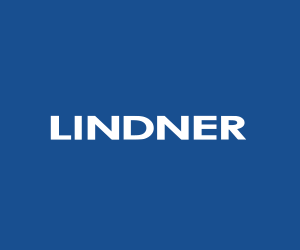plasticker-News
| 2009-11-20 |

|
EPRO: Plastic packaging recycling in 2008 rose to 29%, despite crisis
|
EU27+2 recycled 29% of all its plastics packaging in 2008, easily surpassing the EU´s target of 22.5%, says the annual report Compelling Facts about Plastics. This report has been produced in partnership between PlasticsEurope, EuPC, EuPR and EPRO. The recycling rate was up from 28% in 2007 even though the industry was struggling to survive the economic recession. Energy recovery also reached 29%. In total 58% of all plastic packaging was recovered in 2008. As 42%, the balance, ends up in landfills, we still have a job to do, EPRO says. Overall statistics of plastics The report, released on 30th September, brings analysis of European plastic production, demand and recovery for 2008. In terms of overall plastics ´recovery´, 51.3% of post-consumer used plastics in Europe (EU27+2) were recovered in 2008, with the rest going to disposal. Of the 51.3% recovered, 5.3m tonnes were recycled - as material and feedstock - and 7.5m tonnes were recovered as energy. Due to the financial crisis of 2008, global production fell to 245m tonnes in 2008 from 260m tonnes the year before. In Europe the production declined from 65m tonnes to 60m tonnes, while the demand from European converters dropped by 7.5% to 48.5m tonnes. The recovery of plastics is close to 100% in some European countries with around 40% of recycling being achieved. The report says that Germany contributes 34% of all plastics to energy recovery in Europe, followed by France, Italy and Netherlands. Smaller countries like Switzerland, Denmark, Belgium, Austria, Sweden, Luxembourg and Norway have all very good results on energy recovery and these countries together with Germany and the Netherlands, obtained an overall recovery rate of 80% or more. According to the report the following ten states; Germany, Estonia, Czech, Belgium, Sweden, Austria, Switzerland, Norway, the Netherlands and Slovenia - recycled more than 30% of their plastic packaging. The report also says that, despite 3% annual growth in post-consumer waste over the past decade, the amount of waste sent to landfills has remained stable. As the diversion from landfill progress on average is slow, bans and landfill taxes might be necessary in order to reduce the amounts of all kinds of waste ending up at landfills in several European countries. Still many nations operate with very low prices on such land filling and do then slow down the much needed diversion process to better recovery options, EPRO says. Plastic packaging statistics Packaging remains the biggest end-use for plastics (38%), followed by construction (21%), auto (7%), electrical and electronic (6%). Other applications, including medical and leisure, account for 28%. Packaging contributes to about 63% of end - life quantity of plastics and as much as 83% of all plastics recycled. The 4.4 m tonnes of packaging recycled in 2008 thus lifted the average recycling rate for all plastics in Europe, EPRO says. The recycling rate for plastic packaging rose from 28% in 2007 to 29% in 2008. This shows that the national recycling schemes in Europe, based on expanded producer responsibility, manage well, even in periods of crisis, EPRO says. The following nations recycled more than 30% of its plastic packaging waste in 2008: Germany (44.5%), Estonia, Czech, Belgium, Sweden, Austria, Switzerland, Norway, Netherlands, Norway and Slovenia. At the other end of the list we find Greece, Lithuania and Malta recycling about 10% of their plastic packaging. 57% of the plastic packaging recycled in the EPRO member countries came from households while 43% were generated by trade and industry. While a quarter of all plastic packaging from households were recycled in 2008, the recycling rate for the trade and industry segment amounted to 40%. The following EPRO countries include all kinds of plastic packaging in their household collection schemes: Germany, Norway, Sweden, Spain and Italy, either in a separate plastic fraction or together with other light packaging (yellow bin). In other countries like Austria and UK some parts of the country collect all plastic packaging while other regions concentrate on just rigid plastic packaging (plastic bottles). In France the system also focuses on rigid plastics (bottles), but French households sort out some flexible plastics as well. France now considers whether it makes sense to expand the system to comprise all plastic packaging. How to sort, recycle and recover such a mixed stream of plastic packaging is a main issue, EPRO says. Outlook After the collapse of the world economy in last quarter of 2008 with a dramatic fall in prices of oil and several raw materials such as plastics, markets are slowly recovering in 2009. Prices have also been climbing since last winter. Some plastics stockpiled at year end 2008 are recycled during first half of 2009. Still there are challenges for industry, including the plastic recycling industry, but markets are at least working. The recycling of plastics packaging might thus pass 30% in 2009, EPRO says. In order to boost recycling further new applications and markets for recycled material should be developed and shipment of used plastics within Europe should be eased in order to develop a sound European market. Removal of any other barriers might also result in even better results for recycling of plastic packaging, EPRO says. Better design for recycling and greener procurement and thus increased demand for recycled products might also stimulate plastics recycling. More Information: www.epro-plasticsrecycling.org Attachments: |
European Association of Plastics Recycling and Recovery Organisations (EPRO), Brussels, Belgium
 back to news list back to news list |  back to top back to top |












